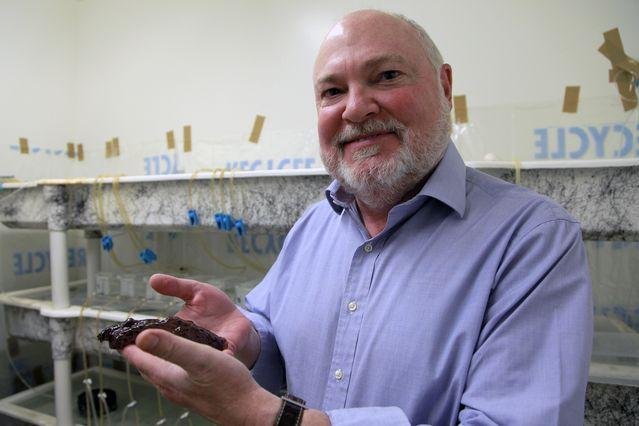Researcher David Glanzman holds an Aplysia californica snail. Photo by UCLA
May 16 (UPI) -- Biologists at UCLA have completed the world's first memory transfer. Scientists were able to transplant a single memory by taking RNA from one marine snail and injecting it in another.
Researchers believe the novel approach could eventually be used to delete painful memories and restore lost memories in humans.
"I think in the not-too-distant future, we could potentially use RNA to ameliorate the effects of Alzheimer's disease or post-traumatic stress disorder," David Glanzman, a professor of integrative biology at UCLA, said in a news release.
Glanzman and his colleagues detailed their breakthrough this week in the journal eNeuro.
RNA's role in gene expression, transcribing DNA and triggering the production of vital proteins, is well documented, but research has shown that ribonucleic acid is also essential to the regulation of a variety of cellular processes.
In lab experiments, Glanzman subjected Aplysia californica specimens to moderate electric shocks. After being shocked in the tail, the snails learn to withdraw their siphons, tube-like structures that enable water flow, and gills for nearly a minute after being gently touched. Snails that weren't shocked only briefly shrink away from a slight touch.
When Glanzman transferred RNA from the nervous system of a previously shocked snail to a snail that had never been shocked, he found the memory of the shock traveled along with the ribonucleic acid. After being injected with the foreign RNA, the snail withdrew its siphons and gills for a minute when touched, despite having never been shocked.
When RNA was transferred from one un-shocked snail to another, the snail retracted its body parts for only a second, as expected.
Glanzman believes his experiments are proof that memories are stored in the nucleus of neurons, not inside synapses as has been previously suggested.
"If memories were stored at synapses, there is no way our experiment would have worked," he said.
While marine snails are an oft used animal model, one well suited for studies of the brain, their nervous system is rather simple. To confirm the role of RNA in memory formation and storage, scientists will need to replicate Glanzman's experiment in animals with a complex brain.















